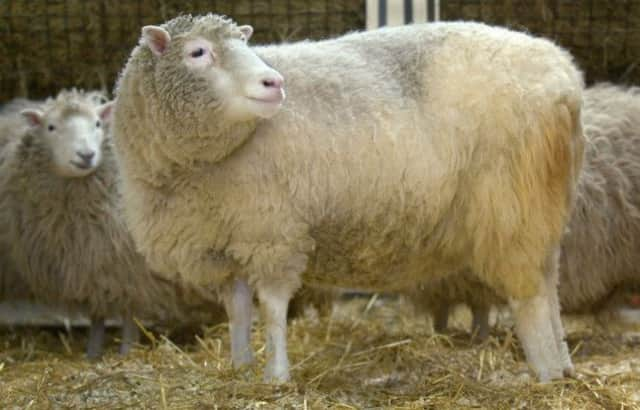Right chemistry will fuel innovation


Scotland has always been at the forefront of life science innovation, with Edinburgh playing a key role, from Lister’s discovery of antiseptic and Simpson’s discovery of chloroform to the cloning of the world’s first mammal, Dolly the sheep.
Today, Edinburgh and the Lothians continue to be significant contributors to Scotland’s growing life science sector, accounting for almost half of Scotland’s biotechnology industry. The development of Edinburgh BioQuarter perhaps epitomises the direction the sector is adopting to remain a significant player on the world stage. BioQuarter’s role is to capture biomedical innovation in all forms and develop and package it so that it attracts the interest of industry and investors. Effectively, we are helping create the building blocks of Scotland’s life science economy.
Advertisement
Hide AdAdvertisement
Hide AdAnd we should be in no doubt that in today’s global economy, our ability to compete depends on our ability to innovate. As the pace of technological development accelerates, innovation is often all that stands between success and failure.
True innovation, however, is difficult to come by. As anyone knows who watches Dragons’ Den, coming up with an idea for a new product doesn’t always cut it with investors or consumers. Innovation in modern medicine is particularly challenging. The more we learn about the biology of the human body, the more we learn how little we know when it comes to curing some of our most troubling diseases.
Groundbreaking research these days requires a multidisciplinary approach and modern biomedical scientists come in all forms; physicists, chemists, geneticists, surgeons, and mathematicians to name a few.
Curing many of the – as yet – untreatable diseases requires new approaches and multiple inputs.
Steve Jobs, founder of Apple, sums this up perfectly: “Creativity is just connecting things. When you ask creative people how they did something, they feel a little guilty because they didn’t really do it, they just saw something. It seemed obvious to them after a while. That’s because they were able to connect experiences they’ve had and synthesize new things.”
However, creativity is not just about differences – the chemistry has to be right for the magic to happen. The working environment must enable and encourage cross-fertilisation between disciplines. Cross-functional teams must be built around projects, rather than having a series of silos where information gets handed on once their part of the job is done.
Creativity happens in the cafe during a conversation between two people who see the world differently. I witnessed this in the mid-Nineties when visiting a rapidly growing biotechnology company on the east coast of the United States. I dropped by one Friday afternoon and was surprised to find all the scientists in the canteen drinking beer and eating popcorn instead of “working”. When I enquired about this, the CEO told me these Friday afternoon “events” were the company’s most productive sessions.
So in a world where innovation is critical and we are all busy, it is too easy to reach for the similar. To innovate, we need difference, and for difference to trigger creativity, we need the right chemistry.
Advertisement
Hide AdAdvertisement
Hide AdAbout six years ago Edinburgh University joined forces with Scottish Enterprise and NHS Lothian to form Edinburgh BioQuarter and create the right chemistry to fuel innovation. The vision was one of a shared campus, with scientists, industrialists and clinicians from different disciplines united around a common vision of improving public health. Access to state-of-the-art research facilities was key, with multiple academic research institutes full of world class researchers and technologies, a medical school, and industry all working together, creating a vibrant community. A critical element in delivering this vision was to assemble a team of industrialists to work with Edinburgh University’s College of Medicine and Veterinary Medicine and NHS Lothian to act as a catalyst. As a result, the Commercialisation Team was born.
We run an annual Innovation Competition, challenging staff and postgraduate students to share their ideas for the improvement of health. Since 2011, we have received around 150 entries, with prizes worth about £90,000 being awarded to more than 30 winners. Three companies have been created from winning entries.
Our ultimate vision for BioQuarter is to build an ecosystem where innovation and commercialisation go hand in hand. Our Innovation Competition is an important part of this, encouraging scientists to not just come up with new ideas, but to think about how these could be applied to improve healthcare in the real world. By stimulating the right environment for innovation, we can ensure discoveries made by Scottish scientists continue to deliver benefits to patients worldwide.
• Dr Mike Capaldi is Commercialisation Director at Edinburgh BioQuarter, www.bioquarter.com
SEE ALSO